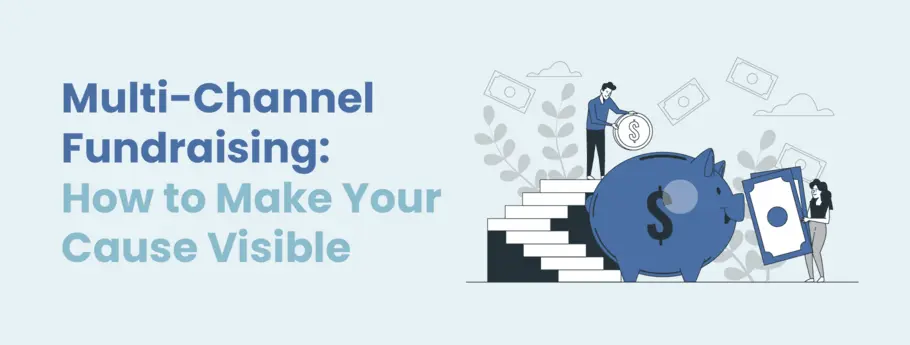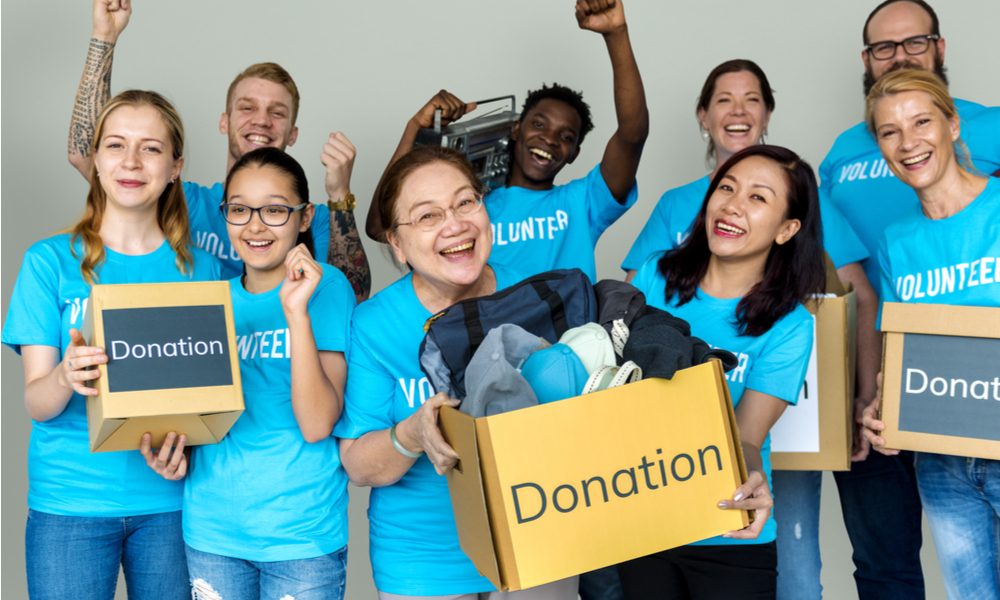Understanding the Crucial Parts of Nonprofit Fundraising: Secret Practices for Enhancing Financial Sustainability
Not-for-profit fundraising is a multifaceted undertaking that calls for a nuanced understanding of a number of vital parts to ensure monetary sustainability (nonprofit agency). From calculated planning that lines up with mission-driven goals to the cultivation of purposeful benefactor connections, each element plays an essential duty in the total success of fundraising initiatives. Furthermore, the assimilation of efficient communication and community engagement strategies improves outreach and influence. However, the adoption of innovation offers both chances and challenges that can substantially affect fundraising results. What certain methods can organizations implement to navigate these complexities and safeguard their financial future?
Strategic Fundraising Preparation
Strategic fundraising planning is an essential part for any not-for-profit organization intending to attain its goal successfully. This procedure entails setting clear, measurable objectives that line up with the company's total objectives while thinking about the one-of-a-kind demands of the community it serves. A well-structured fundraising plan not just identifies prospective income resources yet also details the techniques and strategies required to engage those resources.

Furthermore, leveraging data analytics can notify decision-making by giving insights into benefactor actions and patterns, permitting nonprofits to tailor their fundraising techniques appropriately. Normal evaluations and updates of the fundraising strategy are crucial to reply to transforming circumstances and emerging opportunities. Inevitably, a comprehensive tactical fundraising plan acts as a roadmap for nonprofits, cultivating financial security and allowing them to meet their mission properly.
Structure Contributor Relationships
Building solid contributor relationships is vital for the long-term sustainability of any type of nonprofit company. These partnerships are the structure upon which successful fundraising efforts are built, as they foster depend on, commitment, and involvement amongst supporters. Nonprofits should prioritize growing meaningful links with their donors, recognizing that each communication can substantially impact their readiness to contribute.
To successfully develop contributor relationships, companies should focus on individualized involvement approaches. This entails recognizing the interests, motivations, and providing patterns of specific donors, allowing customized communication that reverberates with them. Normal updates on business progress, program outcomes, and the effect of payments strengthen the worth of their assistance.
In addition, sharing gratefulness is important. Recognizing contributions quickly and genuinely not just improves partnerships yet additionally encourages recurring assistance. Events such as contributor admiration celebrations provide chances for personal links and neighborhood structure.
Ultimately, supporting contributor connections transcends transactional communications; it embodies a collaboration where donors really feel valued and indispensable to the objective. By spending time and sources in relationship-building, nonprofits can improve benefactor retention, boost life time giving, and ensure economic stability for their initiatives.
Efficient Interaction Techniques
Efficient interaction techniques play an essential role in strengthening the solid donor relationships that nonprofits strive to grow. Consistent and clear messaging is necessary for conveying the objective, vision, and impact of the company. Expressing the unique worth recommendation assists donors understand exactly how their contributions make a substantial distinction.
Utilizing several communication networks-- such as emails, social networks, e-newsletters, and in-person events-- makes sure that messages get to a varied audience - nonprofit agency. Customizing communication to various benefactor segments can enhance involvement; as an example, significant benefactors may value in-depth reports on funding allotments, while smaller sized contributors may favor succinct updates a fantastic read highlighting vital success
Narration is an additional powerful tool in not-for-profit communication. Sharing engaging narratives regarding beneficiaries can stimulate psychological responses and promote a much deeper connection with the cause. Openness concerning financials and program results constructs count on, encouraging donors to continue to be involved with time.
Involving the Community
Neighborhood involvement is crucial for nonprofits seeking to magnify their effect and cultivate a feeling of ownership among local stakeholders. Establishing a durable link with the neighborhood not just enhances exposure however additionally constructs count on, crucial for sustainable fundraising efforts. By actively including neighborhood members in decision-making processes, nonprofits can align their goals with the needs and goals of the populace they serve.
To effectively involve the community, nonprofits must prioritize openness and open communication. Organizing public discussion forums, workshops, and informative sessions enables purposeful dialogue, where stakeholders can voice their viewpoints and add to the organization's vision. Furthermore, collaborating with local businesses, colleges, and civic organizations can produce synergistic partnerships that utilize shared sources for greater effect.
An additional essential aspect of community engagement is acknowledging and commemorating regional contributions. Acknowledging contributors, volunteers, and advocates cultivates a sense of belonging and commitment, urging ongoing participation. Additionally, showcasing success stories and the concrete advantages of community support can motivate others to add.
Eventually, proactive neighborhood involvement grows a network of advocates who are invested in the nonprofit's objective, making sure long lasting assistance and improved monetary sustainability.
Making Use Of Modern Technology and Devices

One important tool for nonprofits is an extensive benefactor management system. These systems make it possible for organizations to keep thorough documents of benefactor interactions, payments, and preferences, facilitating tailored communication and engagement (nonprofit agency). Additionally, making use of on the internet fundraising platforms enables nonprofits to reach a more comprehensive target market, making it less complicated for supporters to contribute via different channels, consisting of social networks and e-mail campaigns
In addition, using task monitoring devices can aid enhance interior processes, making certain that fundraising groups stay arranged and focused on their More about the author goals. Automation software program can likewise streamline repetitive jobs, such as sending out thank-you emails or reminders, maximizing personnel time for even more strategic initiatives.
Conclusion
In final thought, the important parts of not-for-profit fundraising include critical planning, solid contributor partnerships, effective interaction, area interaction, and the application of technology. These aspects collectively add to boosting economic sustainability and durability look at this now within not-for-profit organizations.
Additionally, leveraging data analytics can inform decision-making by offering understandings into contributor actions and patterns, permitting nonprofits to tailor their fundraising strategies as necessary.Structure solid benefactor relationships is vital for the lasting sustainability of any kind of not-for-profit organization.Efficient communication strategies play a crucial duty in reinforcing the solid benefactor partnerships that nonprofits aim to cultivate.One vital tool for nonprofits is an extensive benefactor monitoring system.In verdict, the crucial parts of nonprofit fundraising include tactical preparation, strong contributor partnerships, reliable communication, area involvement, and the usage of innovation.